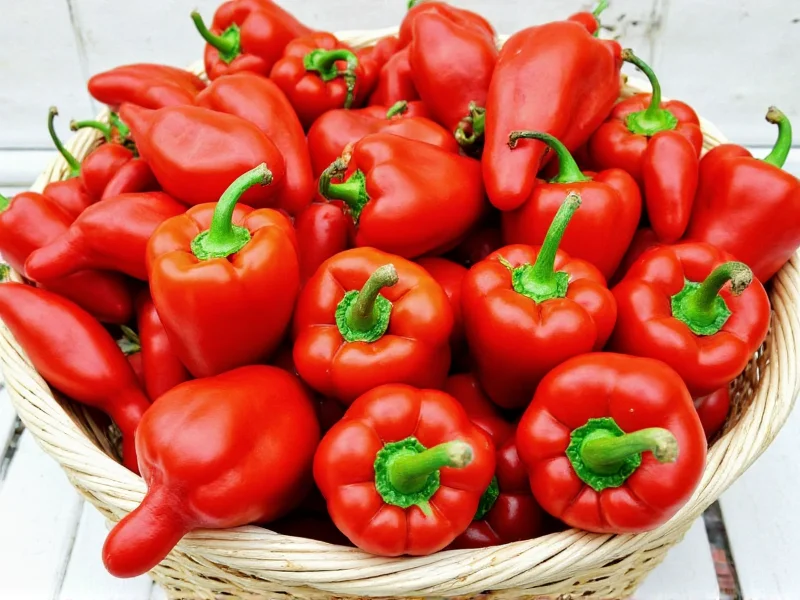Understanding the Scoville Scale: From History to Modern Application
Wilbur Scoville's 1912 innovation revolutionized how we measure and understand pepper heat. Originally called the Scoville Organoleptic Test, this method relied on human tasters to determine heat levels through dilution. Panelists would taste increasingly diluted pepper extracts until the heat became undetectable. The number of dilutions required determined the Scoville rating - a pepper requiring 5,000 dilutions to eliminate heat registered at 5,000 SHU.
How the Scoville Scale Works Scientifically
While the original method was subjective, modern science has refined pepper heat measurement. Today, laboratories use High-Performance Liquid Chromatography (HPLC) to precisely measure capsaicinoid concentration. The primary compound measured is capsaicin, which triggers the burning sensation by activating TRPV1 receptors in our mouths and skin.
After HPLC analysis determines the exact parts per million of capsaicinoids, scientists apply a conversion formula: SHU = PPM of capsaicinoids × 15. This mathematical relationship bridges objective laboratory measurements with the familiar Scoville scale that consumers understand.
Pepper Heat Reference Chart
| Pepper Variety | Scoville Heat Units (SHU) | Heat Level Description |
|---|---|---|
| Bell Pepper | 0 SHU | No heat |
| Pepperoncini | 100-500 SHU | Mild |
| Jalapeño | 2,500-8,000 SHU | Moderate |
| Serrano | 10,000-23,000 SHU | Hot |
| Habanero | 100,000-350,000 SHU | Very hot |
| Ghost Pepper (Bhut Jolokia) | 800,000-1,041,427 SHU | Extremely hot |
| Carolina Reaper | 1,400,000-2,200,000 SHU | World's hottest |
Practical Applications of Scoville Ratings
Understanding scoville heat units chart values helps home cooks and professional chefs make informed decisions. When following recipes that specify "hot peppers," knowing the SHU range prevents unexpected heat levels. For example, substituting a habanero (100,000-350,000 SHU) for a jalapeño (2,500-8,000 SHU) could make a dish 50 times hotter than intended.
Food manufacturers use scoville scale conversion data to create consistent products. Hot sauce producers carefully blend peppers to achieve specific heat profiles, while snack companies select pepper varieties that provide flavor without overwhelming heat. The scoville units measurement system enables precise communication about heat intensity across the food industry.
Limitations and Variability in Pepper Heat
Several factors affect actual pepper heat beyond the scoville scale explanation suggests. Growing conditions significantly impact capsaicin production - stressors like drought or temperature extremes can increase heat levels. Within the same pepper variety, heat can vary by 50% or more depending on these environmental factors.
Human perception also varies dramatically. Genetic differences affect TRPV1 receptor sensitivity, meaning two people might experience the same pepper differently. Tolerance builds with exposure, so regular chili consumers often perceive less heat than occasional eaters. This explains why the scoville heat measurement system, while scientifically valuable, doesn't perfectly predict individual heat experiences.
Modern Alternatives to the Scoville Scale
While the Scoville scale remains popular for consumer communication, food scientists increasingly rely on pure capsaicin concentration measurements. Some researchers advocate for using ASTA pungency units, which measure total capsaicinoids without the subjective conversion to Scoville units.
Despite these alternatives, the Scoville scale endures because it provides an intuitive framework for understanding pepper heat. The familiar reference points - from bell peppers at 0 SHU to ghost peppers exceeding 1 million SHU - create a mental map that helps consumers navigate the world of spicy foods.
Frequently Asked Questions
What does 1,000,000 Scoville units mean in practical terms?
A pepper measuring 1,000,000 Scoville Heat Units (SHU) would require one part pepper extract to be diluted with one million parts sugar-water solution before the heat becomes undetectable. In practical terms, this represents extreme heat found in peppers like the ghost pepper, which can cause significant burning sensations, sweating, and even temporary discomfort if consumed without preparation.
How accurate is the Scoville scale compared to modern testing methods?
The original Scoville Organoleptic Test had significant subjectivity due to human taste variation. Modern HPLC testing provides precise capsaicin measurements with 95%+ accuracy. However, the Scoville scale remains useful as HPLC results are converted to SHU using standardized formulas. The main limitation isn't accuracy but natural variation in pepper heat - even with precise measurement, individual peppers of the same variety can vary by 50% or more in actual SHU.
Can you build tolerance to high Scoville unit peppers over time?
Yes, regular consumption of capsaicin-containing peppers can build tolerance through a process called desensitization. Capsaicin temporarily depletes substance P, a neurotransmitter that transmits pain signals. With repeated exposure, your TRPV1 receptors become less responsive, allowing you to consume hotter peppers without the same burning sensation. This tolerance is temporary and diminishes after several days without exposure to capsaicin.
Why do some Carolina Reapers measure over 2 million SHU while others are lower?
Natural variation in pepper heat comes from multiple factors: growing conditions (soil, water, temperature), plant genetics, and even which part of the pepper is tested. The placenta (white ribs inside the pepper) contains the highest capsaicin concentration. Reputable testers take multiple samples from different parts of multiple peppers to establish a reliable range. The official Guinness World Record Carolina Reaper measures 1,641,183 SHU, but individual specimens can exceed 2 million SHU under optimal growing conditions.
How do I safely handle extremely hot peppers measured in high Scoville units?
When handling high-Scoville peppers (300,000+ SHU), always wear nitrile gloves to prevent capsaicin transfer to sensitive areas. Work in a well-ventilated area as capsaicin vapors can irritate eyes and respiratory system. Never touch your face while handling hot peppers. If exposed, use milk or oil-based products to neutralize capsaicin - water spreads the oil-based compound. For severe exposure, seek medical attention as extremely high Scoville unit peppers can cause chemical burns.











 浙公网安备
33010002000092号
浙公网安备
33010002000092号 浙B2-20120091-4
浙B2-20120091-4